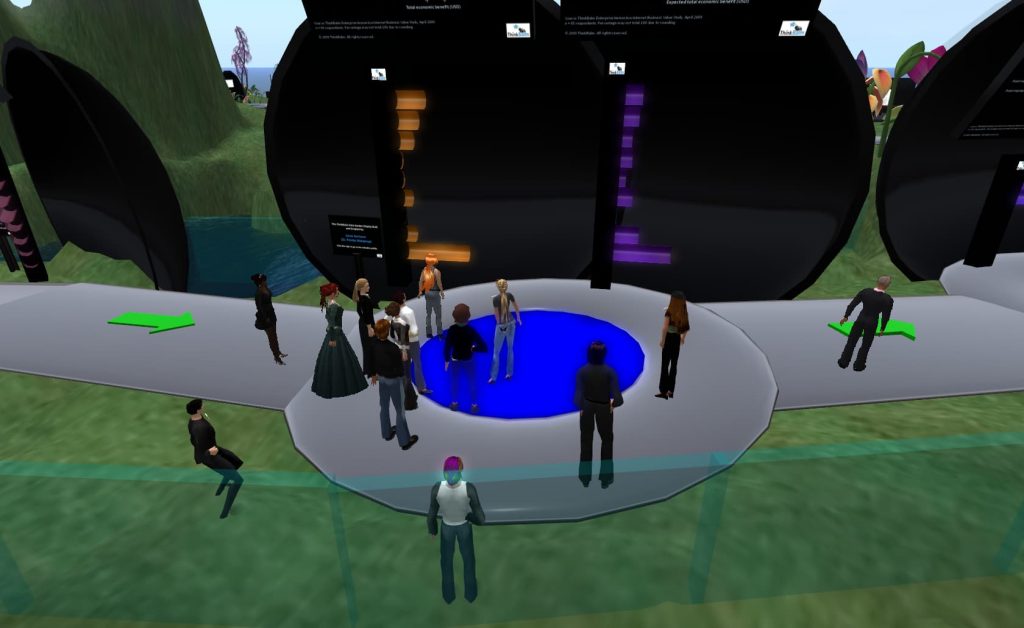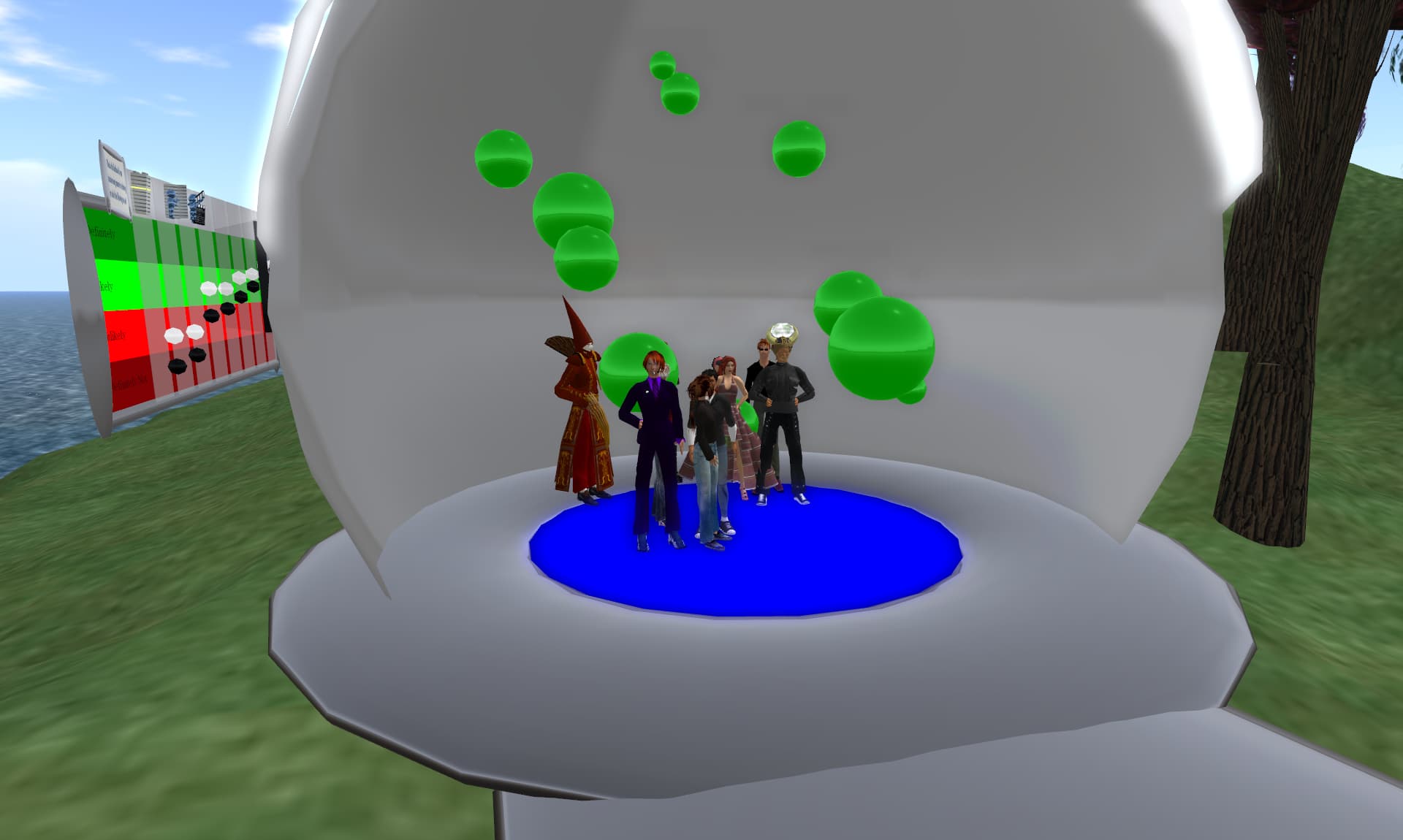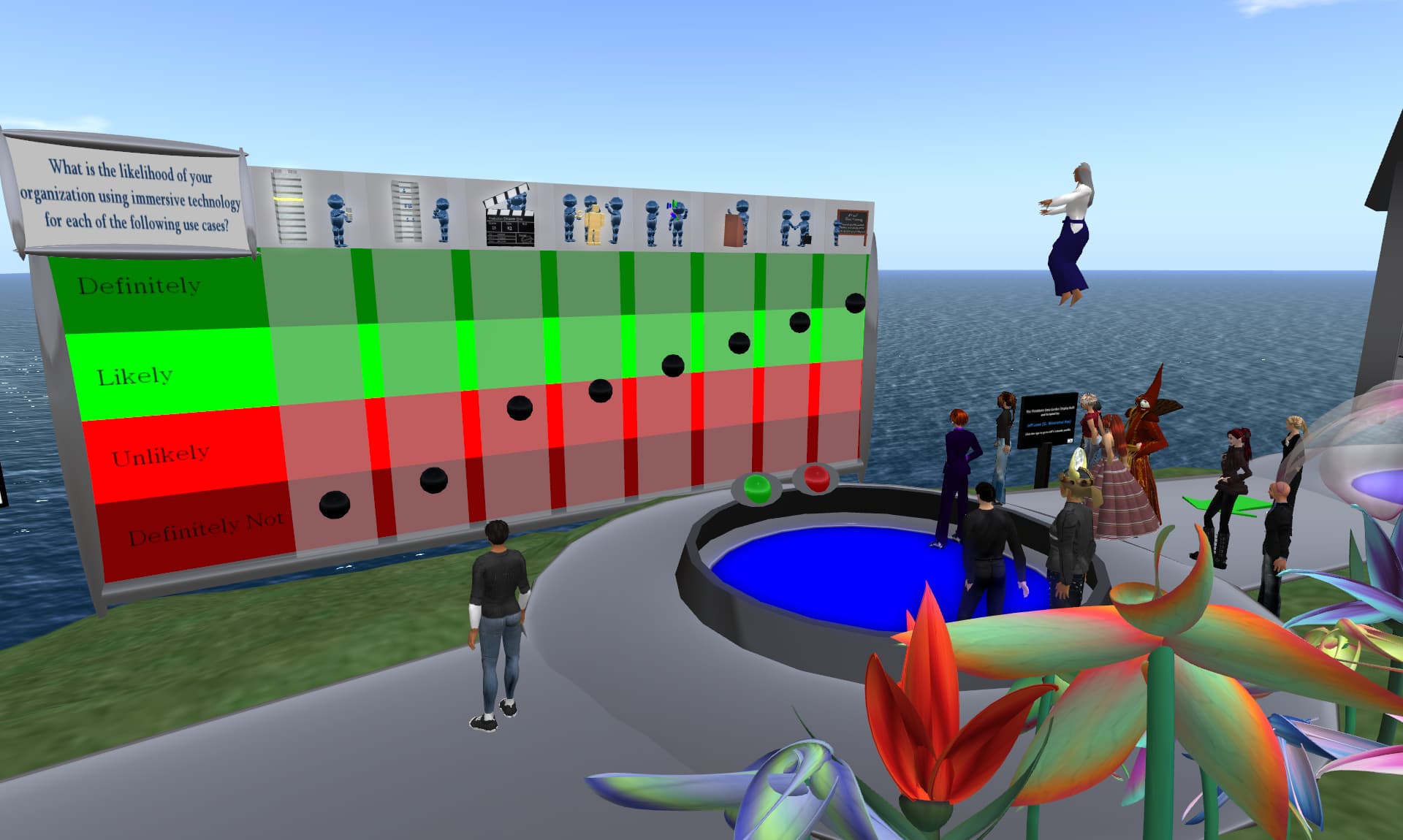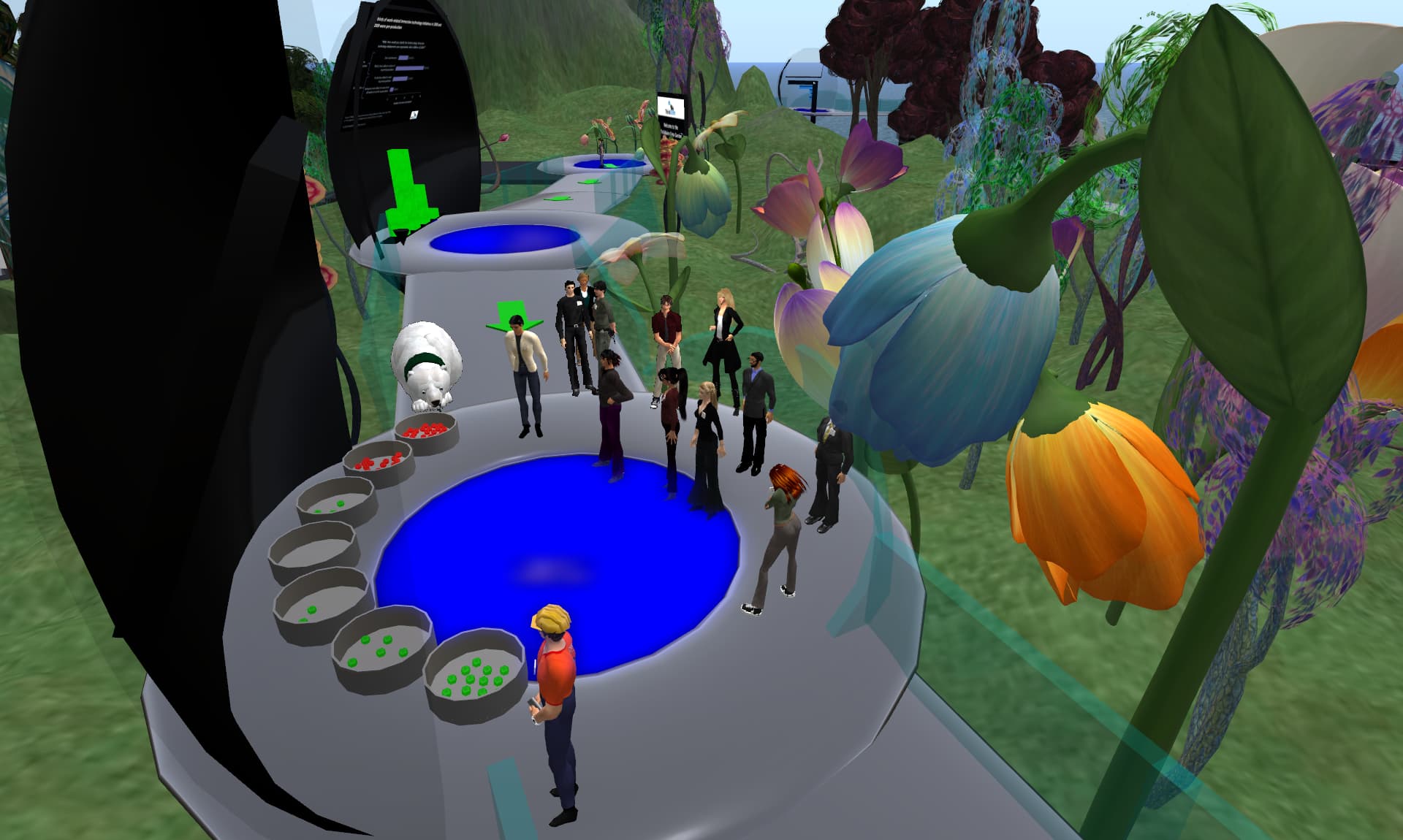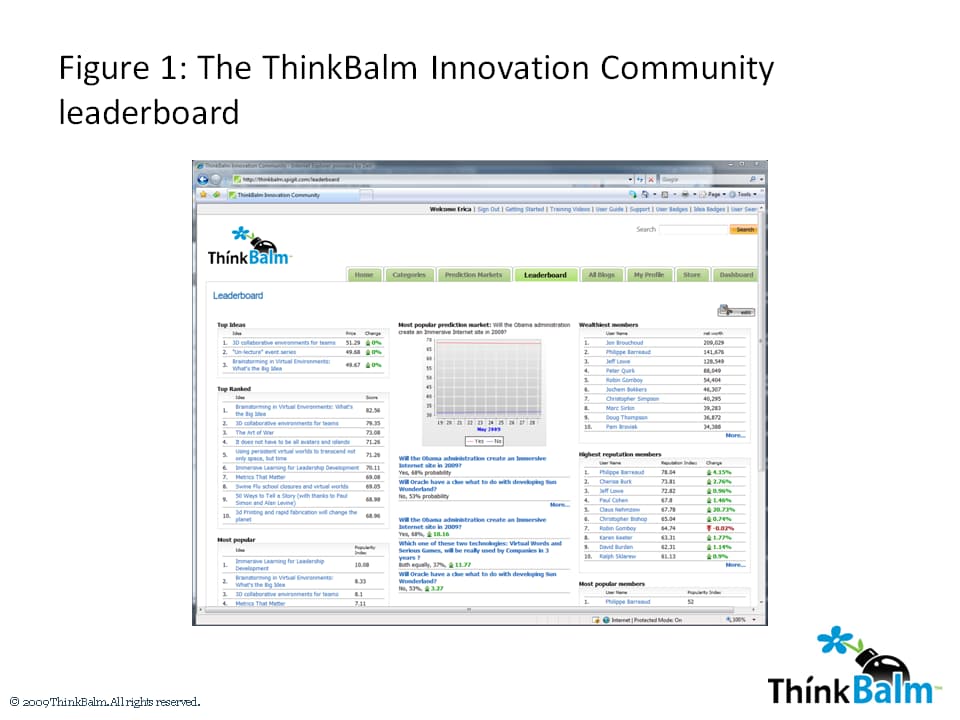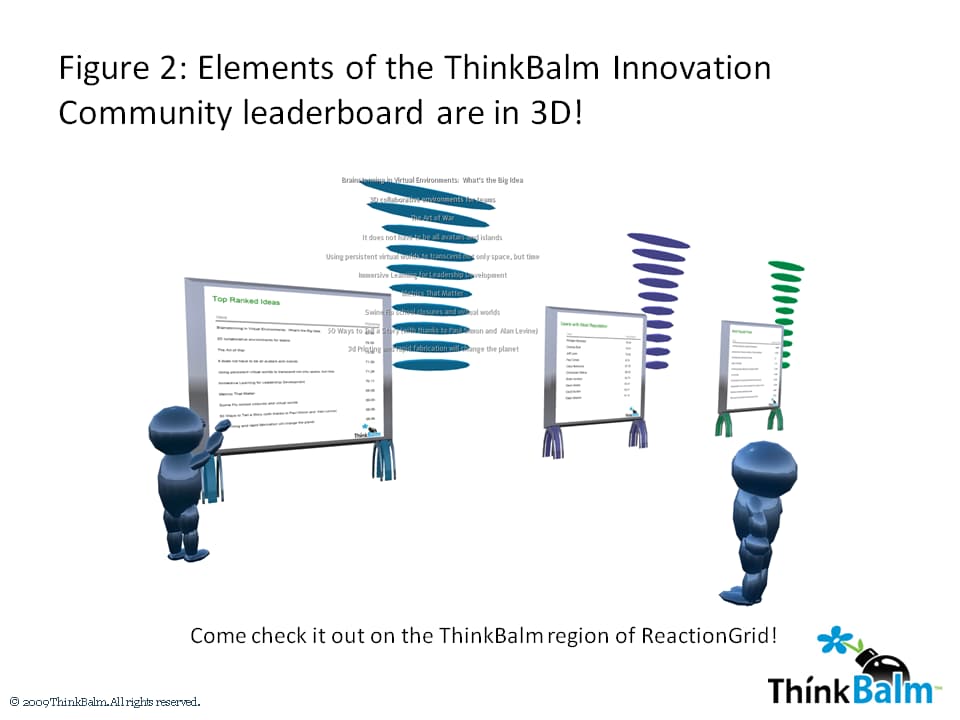In March and April of 2009 the ThinkBalm Innovation Community held two brainstorming sessions on the topic of choosing the right enterprise immersive platform. We held these events in the then-beta version of IBM’s Virtual Collaboration for Lotus Sametime (then called Sametime 3D). More than 30 community members participated in these two discussions.
Brainstorming topic 1: What should go on a requirements list?
In a total of 20 minutes – ten minutes each brainstorming session — participants came up with nearly 50 items that should go on a requirements list for enterprise immersive platforms. Participants submitted their ideas and then voted on the ideas submitted. The items that received at least one vote were:
- Avatar and identity
- Better gestures, more natural avatar behavior
- Pre-made, customizable avatars
- Non-human avatars to reduce fashion show workload
- Interoperability for avatar assets
- Detect or ask gender and set avatar gender automatically
- Option to load photo onto in-world profile
- Communication
- Spatialized (positional) voice
- Reliable media streaming
- Back channel for audio and text support
- Admin controls like muting voice, muting text, etc.
- Integration: Import data from external sources and feed it back out easily
- Ease of use
- Easier navigation (e.g., “auto-follow” feature)
- Browser-based clients
- Minimized learning curve for new users, with easy orientation area
- 3D assets
- 3D object visualization for sharing component designs
- 3D data visualization
- Platform support
- Support for multiple operating systems (e.g., Linux, Mac, Windows)
- Thin client for mobile device access
- Security
- Granular access control over spaces
- Public / private (firewalled or not)
- Scalability: Maximum number of users
Brainstorming topic 2: What are generic “must-have” features?
During the two sessions, we generated more than 30 “must-have” features. You’ll see there is lots of overlap between these items and the items that should go on a requirements list. The must-have features that got at least one vote from participants included:
- Communication and collaboration tools
- Multi-user whiteboards
- Drag and drop PowerPoint support
- Session recording and playback
- Voice and media work across firewalls
- Dial-out support for including participants who just have a phone
- Chat and voice, both group and private
- Web camera support
- Ability to launch from Web browser
- Globalization (e.g., multi-language support, translation)
- Ease of use
- Camera stability and ease of use
- Cost: reasonable acquisition and operational costs
- Integration
- Content management systems and document repositories
- Standards support
- Scripting in Java
Brainstorming topic 3: How do you choose in an emerging market?
During the two sessions, we generated more than 40 thoughts about how to choose an enterprise immersive platform in an emerging market. The items that got at least one vote from participants included (in order of number of votes, then alphabetically:
- Cost
- Demo the platform for your target users
- Ease with which you can get people into and using the platform
- Focus on concepts first, not technology
- Choose open source
- Community of IT experts
- Reference customers
- Size of vendor
- Try as many of the products as you can in realistic situations
- Business case
- Capability maturity in relevant areas that integrate with the immersive platform
- Customer service
- Features
- Hold off on investment until a stable, out-of-box solution is available
- Look for vendor that has long history of offering collaboration apps
- Match features with needs
- Number of apps that are integrated with it
- Out of box templates and processes
- Use case and requirements
- Vendor has security clearance experience
The outcome of these brainstorming sessions is just the tiniest tip of the iceberg. These lists may be helpful to the enterprise immersive platform vendors, as well as to Immersive Internet advocates and implementers trying to make a technology decision. The enterprise immersive platform decision-making process is a complex one that should always start with, “What are you trying to do?” At ThinkBalm, we are now in the planning stages of a comprehensive research study that will result in a guide to making the right technology decision. Stay tuned for more info!
